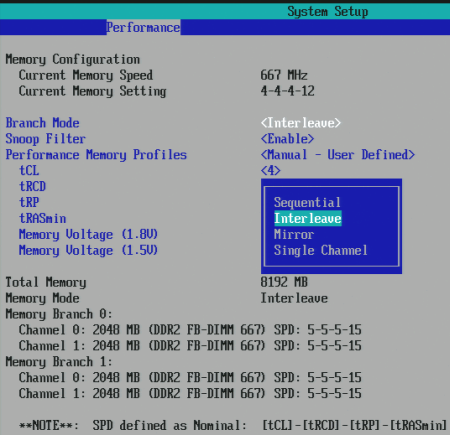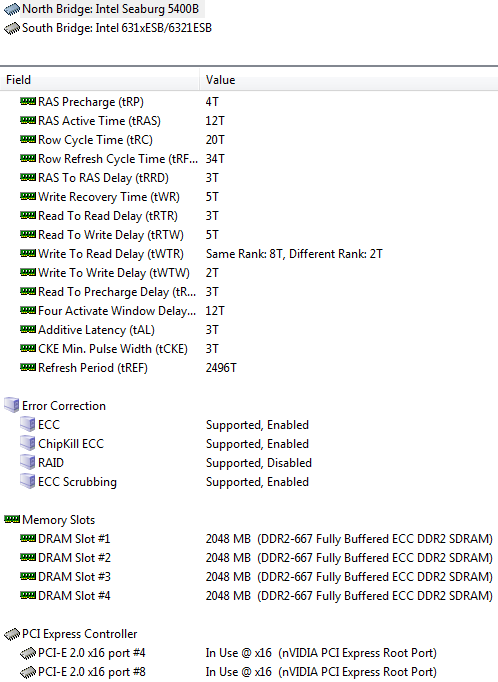Intel Skulltrail Part 1: The Power of 8 Cores
Memory: Not Suited For Desktop And Gaming Systems
It is obvious that the 5400 Northbridge was originally developed with workstations and small servers in mind for databases, forums or download portals. Indeed, we were able to verify that the Skulltrail system offers very good levels of performance for these application scenarios. However, the truth is that a good workstation and small-server motherboard for these types of applications does not necessarily meet the performance demands of a desktop or gaming PC, which is why Intel's D5400XS Skulltrail motherboard is much slower than a conventional desktop motherboard.
Dual-channel memory mode is supported as well.
Many advantages exist only on paper as well. For example, FB-DIMM systems can be equipped with much more memory (up to 128 GB) without suffering the same speed penalties as DDR2. However, these extremely high capacities are not required in the desktop space and couldn't be utilized anyway as a result of the limited number of memory upgrade slots.
In the end, using FB-DIMMs only saddles the Skulltrail platform with a number of disadvantages. After all, this is meant to be a high-end gaming system and not a workstation. Thus, many of the features of FB-DIMMs are not needed, cannot be used and don't bring any performance improvements to the table, either - even though any speed increase would be sorely needed.
The option that offers the best performance with FB-modules is interleaved mode.
Current page: Memory: Not Suited For Desktop And Gaming Systems
Prev Page Memory: Memory Interface And Quad-Channel Next Page Memory - FB-DImms Less Expensive Than DDR3Get Tom's Hardware's best news and in-depth reviews, straight to your inbox.
-
white1widow I agree that the Skulltrail rig with two QX9775's is hands down the most incredible thing as of late. with a dual 9800gx2 SLI option its the gamers dream and could devour any game. As far as 8 core dual proc setups its the most powerful and obviously the most expensive. Being the most powerful means that everyone wants it and being the most expensive means that only the few, dedicated and rich enthusiast will have it... The rest of people who realize the power of a dual quad system will go Quad FX - the drasticaly cheaper route. I paid $600 for two FX72 at 2.8ghz and the quadfather motherboard. And I get incredible performance not far behind what skulltrail benchmarks indicate. I can multitask and an astounding level using XP64bit and a 5 drive raid + 4gb DDR2. So basically my point is this: Intel has created the most incredible rig (skulltrail), but nobody can afford it. thats not bringing power to the masses, its ripping folks off. That is why whenever Intel comes out with something awesome, I will always go and purchase the immensesly comparable AMD alternative at 1/4 the price. Dual FX72's is more than any nerd will ever need, if need be, I will simply upgrade to dual quad opterons and ECC memory.Reply -
xcorat HiReply
So does anybody have a recommendation on a northbridge fan I can use?
preferably easy to install?( I really hate to take the motherboard out on that monster.)


